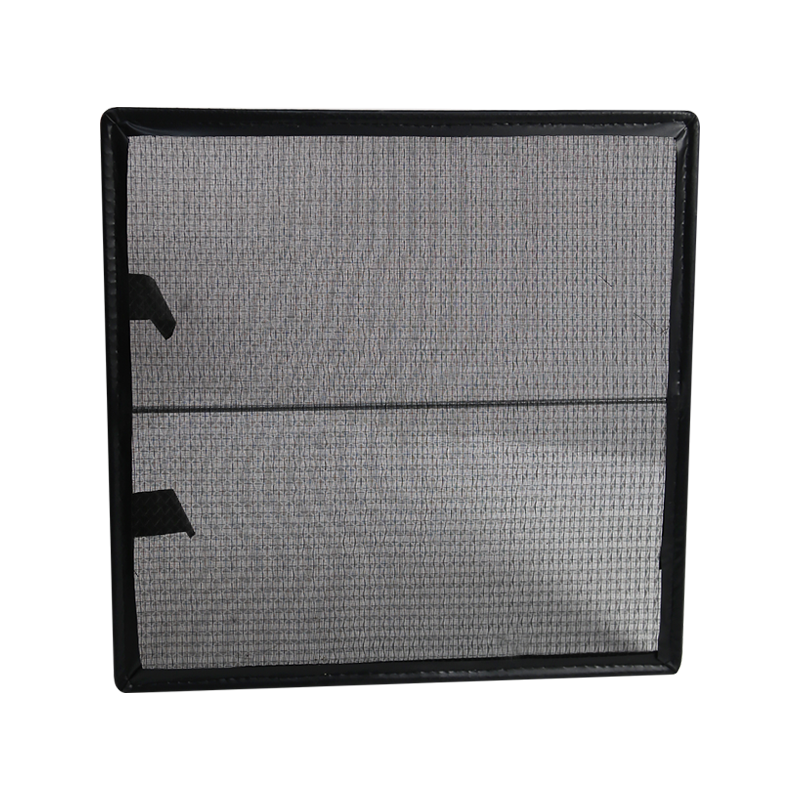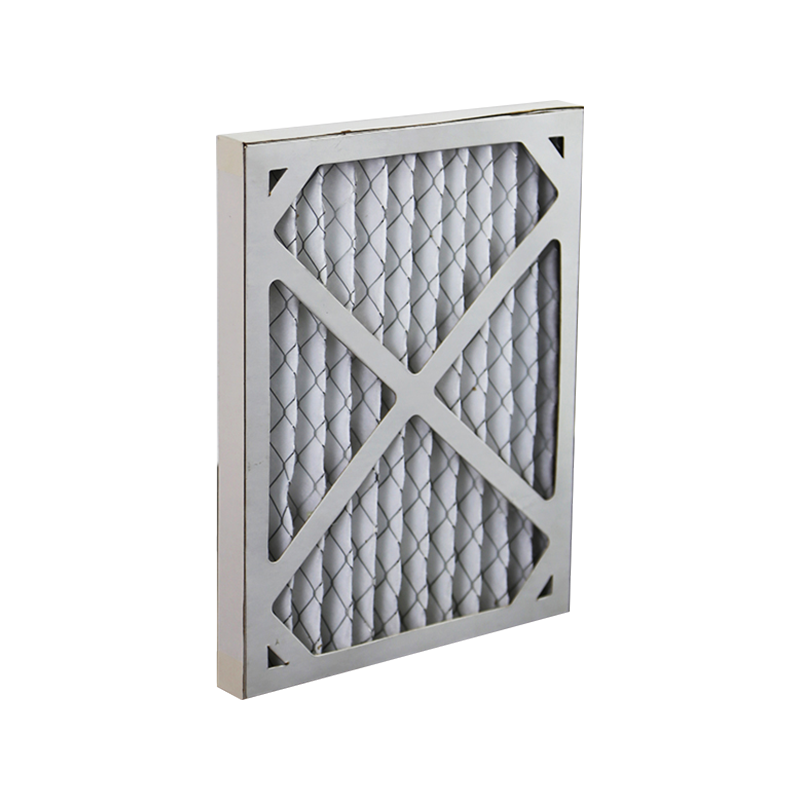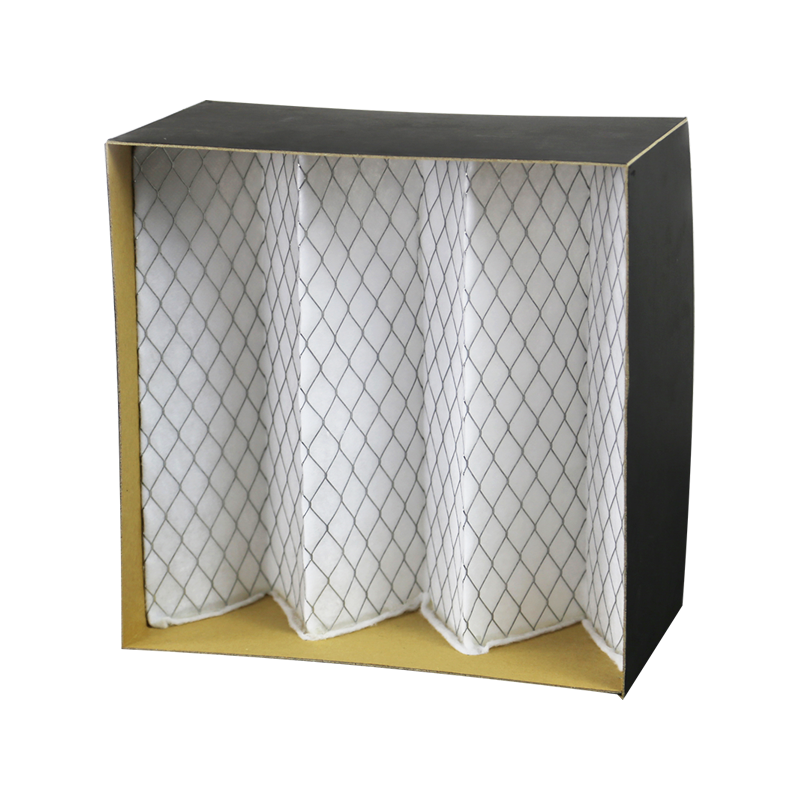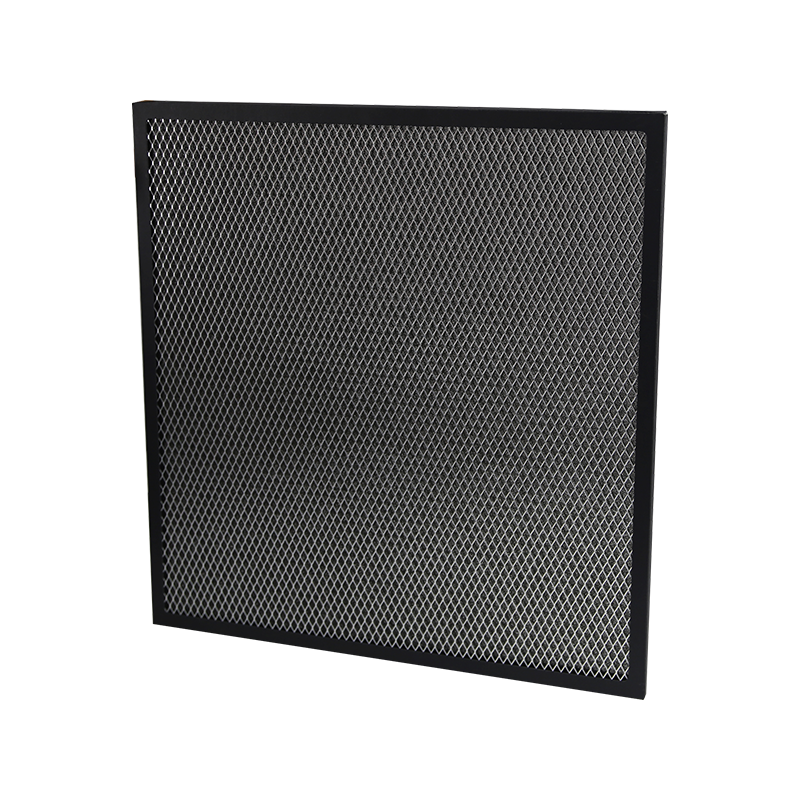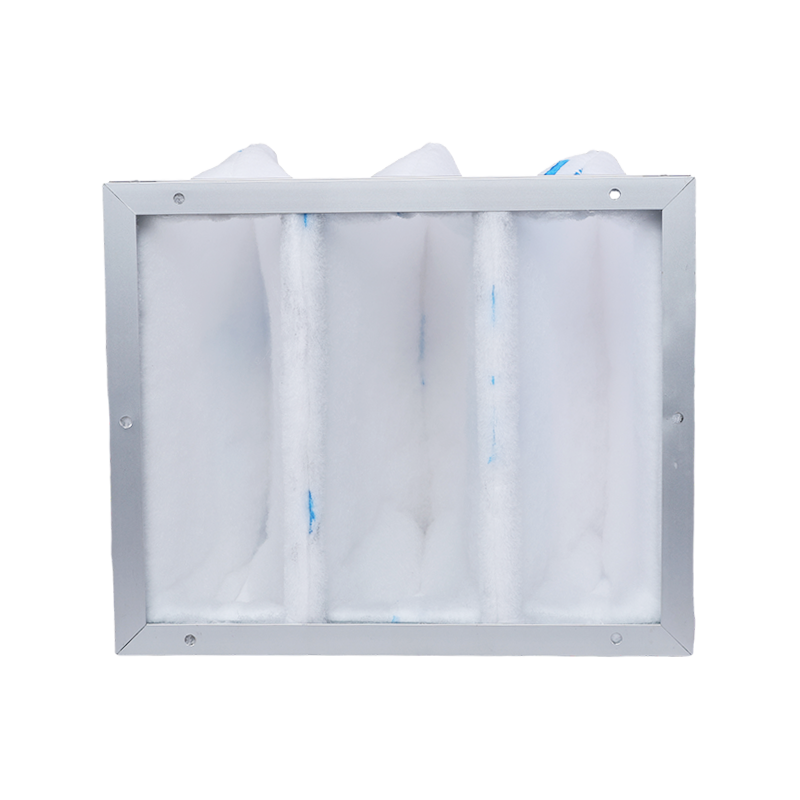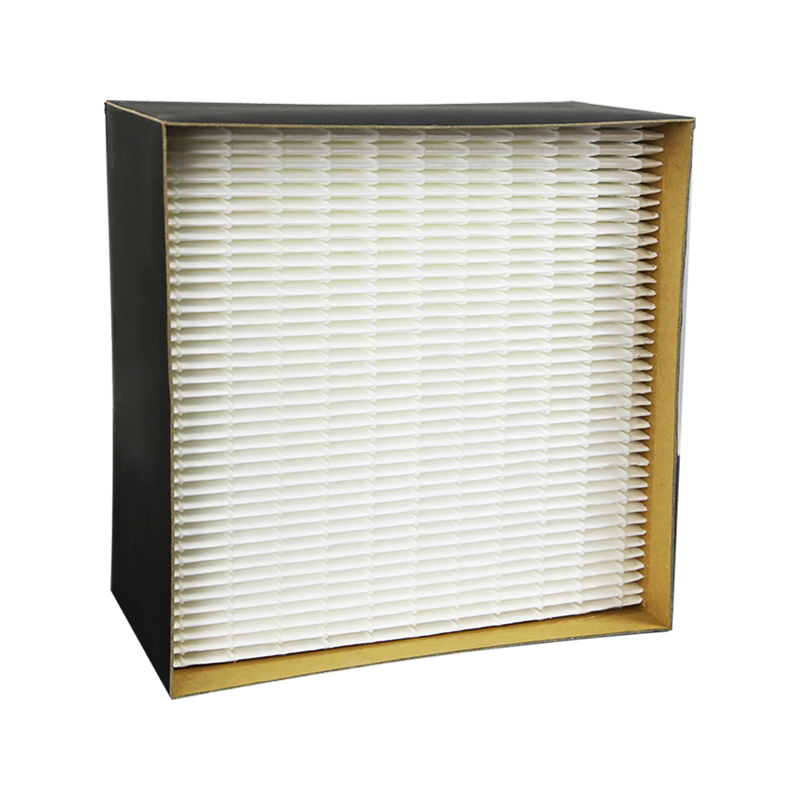From solutions to productions, we’re specialized in making the products you need.
News categories
Product categories
Breathe Easy: A Comprehensive Guide to Air Filters
Introduction to Air Filters
In today's world, where we spend a significant portion of our lives indoors, the quality of the air we breathe within our homes and workplaces has become increasingly critical. This is where air filters step in as unsung heroes, diligently working behind the scenes to safeguard our respiratory health and overall well-being. At their core, air filters are devices designed to remove airborne particles and contaminants from the air circulating through our heating, ventilation, and air conditioning (HVAC) systems. Their primary function is to trap unwanted elements, preventing them from being recirculated and inhaled.
The importance of air filters for indoor air quality cannot be overstated. Indoor air can often be more polluted than outdoor air due to the accumulation of various common pollutants. These microscopic invaders can include dust, pollen from trees and plants, pet dander shed by our beloved furry companions, mold spores, bacteria, viruses, and even volatile organic compounds (VOCs) from household products. Without an effective air filter, these pollutants would freely circulate, potentially triggering allergies, aggravating asthma, and contributing to a range of respiratory issues. By effectively capturing these harmful particles, air filters play a vital role in creating a cleaner, healthier, and more comfortable indoor environment for everyone.
No problem, here's the next part of your article, focusing on the different types of air filters:
Types of Air Filters
The world of air filters offers a variety of options, each with distinct features, benefits, and typical applications. Understanding these differences is key to selecting the right filter for your specific needs.
Fiberglass Filters: These are the most basic and typically the least expensive type of air filter.
Pros: Very affordable, provide minimal resistance to airflow, making them suitable for older HVAC systems not designed for higher MERV filters. They are effective at trapping larger particles like dust bunnies and pet hair.
Cons: Their open weave means they are not very efficient at capturing smaller particles like pollen, mold spores, or pet dander. They offer minimal protection against allergens and often have low MERV ratings (typically 1-4).
Typical Uses: General household use for basic dust control, or in older HVAC systems that require minimal airflow restriction.
Pleated Filters: A significant upgrade from fiberglass filters, pleated filters feature a series of folds (pleats) that increase the surface area for filtration.
Pros: Much more effective at capturing smaller particles such as dust, pollen, pet dander, and some mold spores due to their increased surface area and denser material. They offer a good balance between filtration efficiency and airflow. Available in a wide range of MERV ratings (typically 8-13).
Cons: Can be more expensive than fiberglass filters. Higher MERV pleated filters may cause slightly more airflow restriction, which could be a concern for some older HVAC systems if not properly sized.
Typical Uses: Most residential and light commercial applications where improved indoor air quality and allergen reduction are desired.
HEPA Filters: Standing for High-Efficiency Particulate Air, HEPA filters are the gold standard for air filtration.
What makes them unique: HEPA filters are designed to meet a specific standard: they must capture 99.97% of particles that are 0.3 microns in size. This incredibly high efficiency is due to their dense network of fibers.
Their efficiency: They are exceptionally effective at trapping microscopic particles including dust mites, pollen, mold spores, pet dander, bacteria, and even some viruses.
Applications: Due to their superior filtration capabilities, HEPA filters are crucial in environments where pristine air quality is paramount.
Typical Uses: Hospitals, laboratories, cleanrooms, and homes of individuals with severe allergies, asthma, or compromised immune systems. It's important to note that most residential HVAC systems cannot accommodate true HEPA filters due to airflow restrictions, but HEPA filtration systems are available as standalone air purifiers.
Electrostatic Filters: These filters utilize static electricity to attract and trap airborne particles.
How they work: Some are disposable, using charged synthetic fibers to attract particles, while others are washable and reusable, generating a static charge as air passes through them. The charged particles then stick to the filter's fibers.
Their effectiveness: They are effective at capturing dust, pollen, and pet dander, and can offer a good alternative to pleated filters for some users. Washable versions can save money over time.
Typical Uses: Residential settings for those seeking a reusable option and good general filtration.
Activated Carbon Filters: These filters specialize in removing odors and gases, rather than particulate matter.
Their role in removing odors and gases: Activated carbon is a highly porous material that absorbs gas molecules. This makes them excellent at removing cooking odors, pet odors, smoke, chemical fumes, and volatile organic compounds (VOCs).
Typical Uses: Often used in conjunction with other filter types (like pleated or HEPA filters) to provide comprehensive air purification, particularly in homes with pets, smokers, or those sensitive to chemical odors.
UV Air Filters: Unlike other filters that physically trap particles, UV (ultraviolet) air filters work by using UV-C light to kill or inactivate airborne microorganisms.
How they work: As air passes through the HVAC system, it is exposed to UV-C lamps, which disrupt the DNA of bacteria, viruses, mold, and other pathogens, preventing them from reproducing and spreading.
Their effectiveness: They are effective against biological contaminants but do not remove particulate matter like dust or pollen. They are typically used as a supplemental component within an HVAC system alongside a particulate filter.
Typical Uses: Homes and commercial spaces where concerns about mold, bacteria, and virus transmission are high, such as in healthcare facilities or for individuals with respiratory vulnerabilities.
Understanding MERV Ratings
When you're looking at air filters, you'll inevitably come across the term "MERV rating." This isn't just a random number; it's a standardized measurement that provides critical information about a filter's effectiveness.
Explain what MERV (Minimum Efficiency Reporting Value) rating means: MERV stands for Minimum Efficiency Reporting Value. It's a system developed by the American Society of Heating, Refrigerating and Air-Conditioning Engineers (ASHRAE) to rate the effectiveness of air filters. In simpler terms, the MERV rating indicates how effectively an air filter can capture airborne particles of different sizes. A higher MERV rating signifies a greater ability to capture smaller particles.
Discuss the MERV rating scale and what different ratings indicate: The MERV rating scale typically ranges from 1 to 20, though most residential filters fall within the 1-13 range. Here's a general breakdown of what different ratings indicate:
MERV 1-4 (Basic Filtration): These filters, often fiberglass, are designed to protect HVAC equipment from large particles like dust bunnies, carpet fibers, and pet hair. They offer minimal filtration for indoor air quality.
Examples: Basic furnace filters.
MERV 5-8 (Good Filtration): Common pleated filters fall into this range. They capture medium-sized particles such as mold spores, dust mite debris, pollen, and some pet dander. These are a good balance between airflow and filtration for general residential use.
Examples: Standard pleated home filters.
MERV 9-12 (Superior Residential/Light Commercial Filtration): These filters are highly effective at capturing smaller particles, including Legionella, humidifier dust, lead dust, auto emissions, and welding fumes, in addition to all particles captured by lower MERV filters. They significantly improve indoor air quality and are often recommended for homes with allergy or asthma sufferers.
Examples: High-efficiency pleated filters, often marketed as "allergen reduction" filters.
MERV 13-16 (Advanced Residential/Commercial Filtration): Filters in this range are very efficient at trapping very fine particles, including bacteria, tobacco smoke, pet dander, and sneeze particles. While beneficial for indoor air quality, MERV 13 and higher can restrict airflow in some older or less powerful HVAC systems.
Examples: Superior residential filters, general surgery, superior commercial buildings.
MERV 17-20 (Hospital/Cleanroom Grade Filtration): These are essentially HEPA filters, designed to capture 99.97% or more of particles 0.3 microns in size, including viruses, microscopic allergens, and carbon dust. They are typically used in highly controlled environments.
Examples: Operating rooms, cleanrooms, pharmaceutical manufacturing facilities.
Provide guidance on selecting the appropriate MERV rating for different needs (residential, commercial, medical):
Residential Use (General): For most homes without specific allergy or asthma concerns, a MERV 8 filter offers a good balance of air quality improvement and HVAC system protection without significantly impeding airflow.
Residential Use (Allergies/Asthma/Pets): If anyone in your household suffers from allergies, asthma, or if you have pets, opting for a MERV 11 to MERV 13 filter is highly recommended. These provide significantly better filtration of common allergens and pet dander. However, always check your HVAC system's manufacturer recommendations to ensure it can handle the higher MERV rating without compromising performance or causing strain.
Commercial Buildings (General Office): MERV 8 to MERV 11 are often suitable for general commercial spaces, providing a healthy environment for employees and customers.
Commercial Buildings (High Traffic/Specific Needs): For schools, larger offices, or buildings with higher occupancy, MERV 13 can provide superior indoor air quality.
Medical Facilities (Hospitals, Clinics): MERV 14 to MERV 16 are typically used in general hospital areas, labs, and some patient rooms to control airborne pathogens. For critical areas like operating rooms, isolation rooms, and sterile environments, MERV 17-20 (HEPA) filtration is mandatory due to the stringent air quality requirements.
Important Note: While a higher MERV rating means better filtration, it also means denser material and potentially more airflow resistance. Always consult your HVAC system's manual or a qualified technician before upgrading to a significantly higher MERV rating to ensure your system can handle it efficiently without causing damage or reducing its lifespan.
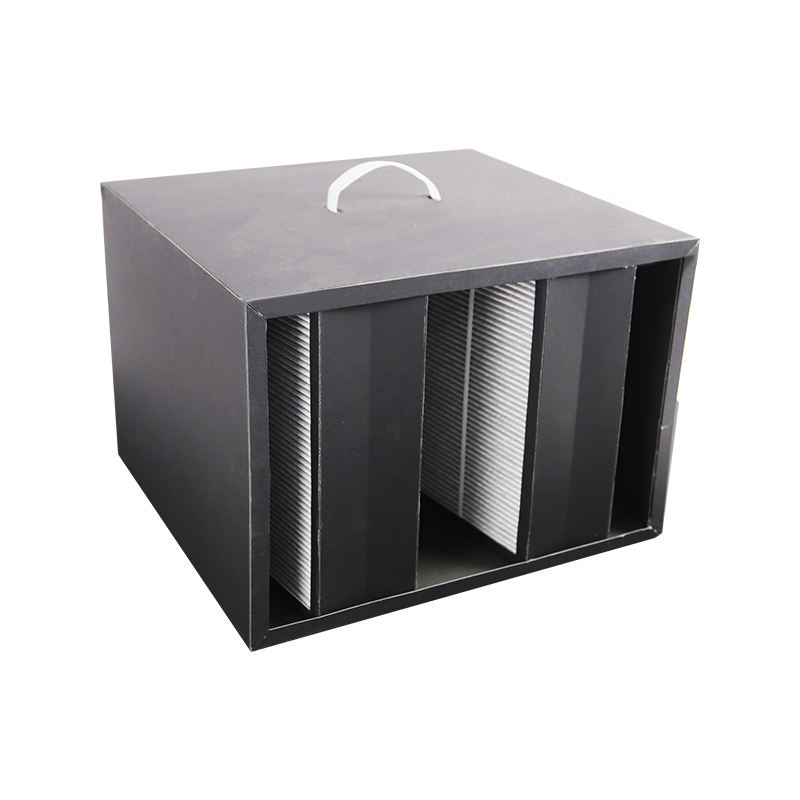
Choosing the Right Air Filter
Selecting the ideal air filter for your home or business isn't just about picking the highest MERV rating. It involves a thoughtful consideration of several key factors to ensure optimal performance, air quality, and system longevity.
Factors to consider when choosing an air filter:
Filter Size and Compatibility with Your HVAC System: This is arguably the most critical factor. Air filters come in a variety of standard and non-standard sizes (e.g., 20x25x1, 16x20x1, 20x20x4). It is crucial to know the exact dimensions your HVAC system requires. An incorrectly sized filter will not fit properly, allowing unfiltered air to bypass it and rendering it ineffective. Check the existing filter for its dimensions, or consult your HVAC system's manual. Using a filter that's too small allows contaminants to bypass the filter, while one that's too large won't fit at all. Also, consider the thickness of the filter (1-inch, 2-inch, 4-inch, etc.); thicker filters typically offer more surface area and can last longer, but your system must be designed to accommodate them.
MERV Rating Based on Specific Needs (Allergies, Asthma, General Air Quality): As discussed, the MERV rating directly correlates with the filter's ability to capture smaller particles.
For general household use and basic dust control, a MERV 8 filter is often sufficient.
If you or family members suffer from allergies, asthma, or have pets, aiming for a MERV 11 to MERV 13 filter is highly recommended to trap fine allergens like pollen, pet dander, and mold spores.
For maximum filtration (e.g., in homes with severe respiratory sensitivities or during high-pollen seasons), consider the highest MERV rating your HVAC system can efficiently handle (often MERV 13 for residential systems). Remember to verify your system's compatibility to avoid airflow issues.
Filter Lifespan and Replacement Frequency: Different filters have varying lifespans, typically ranging from 1 to 3 months for standard filters, and up to 6 months or more for some higher-end pleated or extended-life filters.
Factors affecting lifespan include the MERV rating (higher MERV filters can get dirty faster), the number of occupants, the presence of pets, local air pollution levels, and ongoing renovation work.
Regular replacement is key. A clogged filter restricts airflow, forcing your HVAC system to work harder, leading to higher energy bills and potential system damage.
Cost Considerations: Air filter prices vary significantly based on type, size, and MERV rating.
Fiberglass filters are the cheapest upfront but offer minimal filtration.
Pleated filters represent a good value, offering better filtration for a moderate cost.
HEPA filters (or HEPA-grade compatible filters) and activated carbon filters are generally the most expensive due to their advanced filtration capabilities.
While it's tempting to opt for the cheapest option, remember that investing in a higher-quality filter can save you money in the long run through improved HVAC efficiency, reduced maintenance, and better health outcomes. Consider the long-term value, not just the initial purchase price.
Top Air Filter Products
To help you navigate the vast array of options, here are a few highly-regarded air filter products that stand out in the market, catering to different levels of filtration needs and budget considerations.
Filtrete 1900 MPR Healthy Living Ultimate Allergen Air Filter:
Key Features: This filter boasts a high Microparticle Performance Rating (MPR) of 1900, which is roughly equivalent to a MERV 12-13 rating. It's engineered to capture a significant percentage of airborne microscopic particles, including dust, pollen, mold spores, pet dander, bacteria, and even some viruses. Its advanced electrostatically charged fibers actively attract and hold onto these tiny particles.
Benefits: Superior allergen capture makes it an excellent choice for households with allergy and asthma sufferers, or those with pets. It helps significantly improve indoor air quality.
Availability: Widely available in various standard sizes (e.g., 20x25x1, 16x25x1) to fit most residential HVAC systems.
Honeywell Home Allergen Plus Odor Reducer Air Filter:
Key Features: This filter offers a dual-action approach, effectively capturing allergens while also incorporating activated carbon to reduce common household odors. It typically comes with a MERV rating in the 8-10 range, providing a good balance of particulate filtration and odor absorption.
Benefits: Ideal for homes with pets, smokers, or those prone to lingering cooking smells. It tackles both airborne particles and unpleasant odors, contributing to a fresher indoor environment.
Design: Designed for standard residential HVAC systems, making it a convenient upgrade for many homeowners.
Nordic Pure MERV 12 Pleated AC Furnace Air Filters:
Key Features: Nordic Pure is known for its high-quality pleated filters. Their MERV 12 offering provides excellent filtration for residential use, effectively capturing fine particles like dust mites, mold spores, pollen, pet dander, and some bacteria. The electrostatic charge within the synthetic media enhances particle capture.
Benefits: A strong contender for improving indoor air quality, especially for those with moderate allergies or seeking a cleaner home environment without the potential airflow restriction of very high MERV filters.
Variety: Available in a very extensive range of sizes, including less common dimensions, making it easier to find a perfect fit for almost any system.
FilterBuy MERV 8 Pleated AC Furnace Air Filter:
Key Features: FilterBuy offers reliable pleated filters at a competitive price. Their MERV 8 filter strikes a good balance between effective filtration and maintaining optimal airflow for your HVAC system. It efficiently captures common airborne particles like dust, pollen, and lint.
Benefits: A cost-effective solution for general household use, providing better performance than basic fiberglass filters without putting excessive strain on your HVAC system. It's a solid choice for routine air quality maintenance.
Suitability: Suitable for most general household applications where a good level of basic filtration is desired.
Aerostar Home Max MERV 11 Pleated Air Filter:
Key Features: The Aerostar Home Max MERV 11 filter utilizes electrostatically charged synthetic media to capture a wider range of airborne particles than lower MERV-rated filters. This includes smaller allergens and microscopic debris.
Benefits: A great mid-range option for those looking to significantly improve indoor air quality, especially if allergies or general environmental dust are a concern. It provides a noticeable upgrade in filtration efficiency over MERV 8 filters.
Performance: Helps protect your HVAC system from finer particles while contributing to a healthier home atmosphere.
Air Filter Maintenance and Replacement
While choosing the right air filter is crucial, its effectiveness heavily relies on proper maintenance and timely replacement. Neglecting your air filter can lead to diminished air quality, increased energy bills, and even damage to your HVAC system.
Explain how often air filters should be replaced.
The general recommendation for replacing air filters in most residential settings is every 1 to 3 months. However, this is a guideline, and the actual frequency depends on several factors:
Occupancy: Homes with more people tend to generate more dust and require more frequent changes.
Pets: Households with pets should plan to change filters every 1 to 2 months, as pet dander and hair can quickly clog filters.
Allergies/Asthma: If anyone in your home suffers from allergies or asthma, or if you aim for optimal indoor air quality, a monthly change might be beneficial, especially during peak allergy seasons.
Local Air Quality: If you live in an area with high pollution, ongoing construction, or during wildfire season, more frequent changes will be necessary.
Filter Type: Thicker, higher-MERV filters (like 4-inch or 5-inch models) typically have more surface area and can last longer, sometimes up to 6 months, compared to standard 1-inch filters. Always check the manufacturer's recommendations.
HVAC System Usage: Systems that run continuously (e.g., during extreme weather) will accumulate dirt faster.
Provide tips on how to check and replace air filters.
Checking and replacing your air filter is a simple task that can have a big impact.
Locate Your Filter: Air filters are typically found in one of two places:
In the return air duct: This is a common location, often near the furnace or air handler, or sometimes behind a large return air vent on a wall or ceiling.
At the air handler/furnace: Some systems have the filter slot directly where the return duct connects to the HVAC unit.
Note the Size and Airflow Direction: Before removing the old filter, make a note of its dimensions (printed on the frame, e.g., 20x25x1) and the direction of the airflow arrow. The arrow on the new filter must point in the same direction as the airflow towards the furnace/air handler.
Inspect the Old Filter: Carefully slide out the old filter. Hold it up to a light source. If you can't see light through it or if it's visibly coated with a thick layer of dust, dirt, or pet hair, it's definitely time for a change.
Dispose of the Old Filter: Wrap the dirty filter in a plastic bag to contain the dust and dispose of it in your trash.
Insert the New Filter: Unwrap the new filter and ensure the airflow arrow points correctly. Slide the new filter smoothly into the slot until it's fully seated.
Set a Reminder: Mark your calendar, set a recurring reminder on your phone, or write the replacement date directly on the filter frame with a marker.
Discuss the importance of regular maintenance for HVAC system efficiency.
Regular air filter replacement is paramount for the long-term health and efficiency of your entire HVAC system.
Prevents System Strain: A dirty, clogged filter restricts airflow, forcing your furnace or air conditioner to work harder to push or pull air through. This increased strain can lead to premature wear and tear on critical components like the fan motor, potentially resulting in costly repairs or early system failure.
Maintains Energy Efficiency: When your HVAC system has to work harder, it consumes more energy. A clean filter allows for proper airflow, enabling your system to operate at its optimal efficiency, which translates directly into lower energy bills. The Department of Energy estimates that replacing a dirty, clogged filter with a clean one can lower your air conditioner's energy consumption by 5% to 15%.
Protects Internal Components: Beyond just improving air quality, the filter's primary job is to protect the sensitive internal components of your furnace and air conditioner from dust, dirt, and debris. Without a functioning filter, these contaminants can build up on coils, fans, and heat exchangers, reducing their effectiveness and lifespan. Dirty evaporator coils, for instance, can significantly reduce cooling efficiency.
Ensures Consistent Performance: A clean filter ensures that your HVAC system can consistently deliver conditioned air throughout your home, maintaining comfortable temperatures and humidity levels without struggling.
By making filter replacement a regular habit, you're not just improving your indoor air quality; you're also protecting a significant home investment and ensuring its optimal performance for years to come.
Benefits of Using Air Filters
The diligent work of air filters in your HVAC system extends far beyond simply keeping dust at bay. Their consistent operation yields a multitude of advantages that profoundly impact your health, comfort, and even your wallet.
Improved Indoor Air Quality and Health Benefits: This is the most direct and significant benefit. Air filters actively remove a wide array of airborne pollutants from your living spaces. By trapping particles like dust, dirt, fibers, and even microscopic contaminants, they ensure that the air you breathe is cleaner. This reduction in airborne irritants can lead to fewer respiratory issues, better sleep, and an overall healthier indoor environment for all occupants.
Reduced Allergens and Irritants for Allergy and Asthma Sufferers: For individuals prone to allergies or suffering from asthma, air filters are indispensable. They significantly reduce the presence of common triggers such as pollen, pet dander, dust mites, and mold spores. By filtering these allergens out of the air, symptoms like sneezing, coughing, itchy eyes, and wheezing can be dramatically minimized, leading to greater comfort and fewer allergic reactions or asthma attacks. High-efficiency filters (MERV 11 and above) are particularly beneficial in this regard.
Protection of HVAC System Components from Dust and Debris: Air filters serve as the first line of defense for your expensive HVAC equipment. Without them, dust, dirt, pet hair, and other debris would be freely drawn into the system, accumulating on vital components. This buildup can clog evaporator coils, restrict airflow through the blower motor, and even damage the furnace heat exchanger. A clean filter prevents this accumulation, safeguarding the internal mechanisms of your heating and cooling system and extending its operational lifespan.
Energy Savings Through Improved HVAC System Efficiency: A clean air filter allows your HVAC system to "breathe" easily. When a filter is clogged with dirt and debris, the system has to work much harder to pull air through, putting a strain on the fan motor and other components. This increased effort translates directly into higher energy consumption. By regularly replacing your filter, you ensure optimal airflow, allowing your HVAC system to operate at peak efficiency. This reduces the energy needed to heat or cool your home, leading to noticeable savings on your utility bills. It's a simple, cost-effective way to improve your home's energy footprint.
Conclusion
In an age where indoor environments play such a central role in our daily lives, the often-overlooked air filter emerges as a critical guardian of our well-being. This comprehensive guide has explored the diverse types of air filters, demystified MERV ratings, and provided essential considerations for selecting and maintaining the right one for your specific needs.
From safeguarding your family's health by trapping allergens and pollutants to protecting your valuable HVAC system and even contributing to energy savings, the benefits of a well-chosen and regularly replaced air filter are undeniable and far-reaching.
Don't underestimate the power of clean air. By prioritizing indoor air quality through the smart selection and diligent maintenance of your air filters, you're not just making a small adjustment; you're investing in a healthier, more comfortable, and more efficient home environment for yourself and your loved ones. Breathe easier today by making informed choices about your air filtration.
What Are Primary Air Filters? Understanding Their Role, Types, and Benefits
How Often Should a Cylindrical Filter Cartridge Be Replaced?
related products
Copyright 2023 Nantong Henka Environment Solutions Co.,Ltd. All Rights Reserved


 English
English русский
русский Español
Español 简体中文
简体中文
